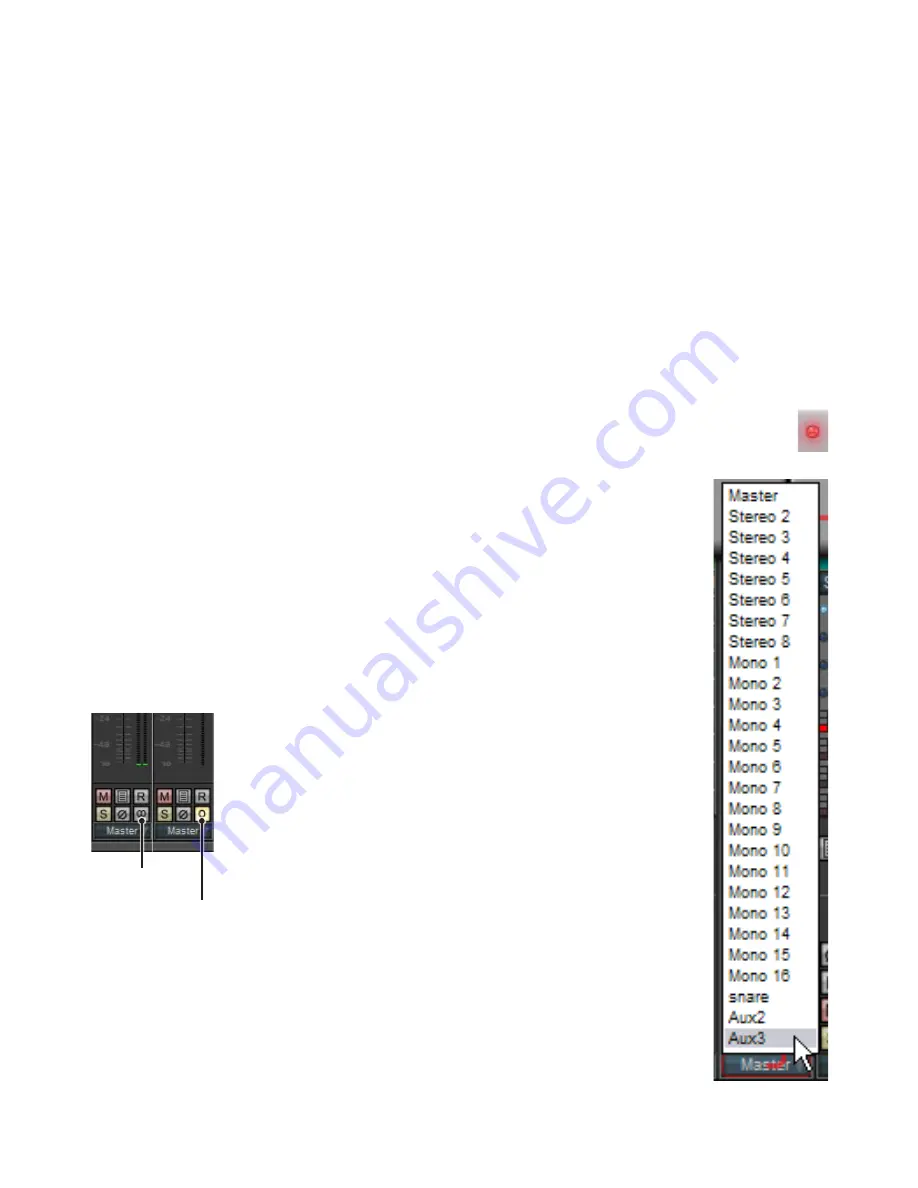
Mute & Solo
All channels have a mute and solo button.
Mute and Solo behaviour: Implied and Hard Mute/Solo
BFD2’s mixer features very flexible mute and solo behaviour. It features two types of mute and solo states: implied and hard.
• Engaging only the solo button on a channel results in implied mutes on all other channels: mutes are shown elsewhere, but the
mute state of those channels is only implied. When the solo button is disengaged, the implied mutes on the other non-soloed
channels are also disengaged.
• Implied solos are generated on channels contributing signals to the soloed channel, or in its subsequent signal path. They are
shown in a ‘half-lit’ state.
• Engaging only the mute button on a channel results in only that channel being hard muted (it is in an actual muted state)
• Engaging both mute and solo buttons on a channel results in the mute overriding the solo. Both buttons are lit to show that the
hard solo and mute states are engaged. While in this state, unmuting the channel results in it reverting to a hard-soloed state. If
the channel is instead unsoloed, it will be left in a hard-muted state – it is not an implied mute.
• Hard-muting an ‘auto-soloed’ channel (in implied solo state) overrides the implied solo and the channel is muted.
Solo Isolate function
You can set up channels in solo isolate mode, which means that they are always heard when soloing any other channel.
To put a channel into solo isolate mode, click its solo button while holding down the SHIFT key. The solo button becomes ‘half-lit’,
and is always heard along with any other soloed channel.
Rude Solo indicator
The BFD2 status bar contains a Rude Solo indicator, that is always lit whenever one or more channels are soloed.
You can ALT-click this indicator in order to un-solo all channels currently in a hard solo state.
Record enable
This button is used in conjunction with BFD2’s audio export features. Enabling this button for a channel
means that the channel is exported as a discrete audio file when performing any export audio.
Click the button to record enable a mixer channel. Click it again to record disable it.
You can record enable and disable all mixer channels using the audio export panel, part of the Mixer page
Utility panel.
Phase flip
This button allows you to reverse the phase of any channel.
All BFD2’s mic channels are provided in phase with each other (including for kit-pieces which feature mul-
tiple out of phase mics, such as kicks and snares). However, if you need to flip the phase of any channel,
you can do so.
Mono/Stereo (aux channels only)
By default, aux channels are added to the mixer as stereo channels. This button al-
lows you to change an aux channel to mono.
This is especially useful if you want to process multiple direct channels together
before sending them into your host as mono outputs.
If you have any FX on an aux channel before changing it from stereo to mono status,
they are switched for mono versions automatically with their settings intact, and vice
versa.
Output routing
Each mixer channel can be routed to any available output or any available aux chan-
nel as long as it is positioned to the right of the source channel in the mixer layout
(see the ‘Channel processing order’ sub-section in section 3:6 for details).
You can route as many channels as you like to the same output or aux channel - they are summed before
the output or before the input of the aux channel.
The output routing selector does not exist on the master channel, as it is hardwired to the first set of BFD2
outputs.
Channel strip context menu
Right-clicking anywhere on a channel strip results in the channel strip context menu appearing. You can
also left-click the menu button on each channel in order to make this menu appear.
This context menu offers a number of useful functions for managing channel strips, and provides access to
the channel preset system. See section 3:6 for more details.
Using the output
routing selector
Stereo state
Mono state
Содержание BFD2
Страница 1: ...2 0 1 Dec 2007 www fxpansion com...









































